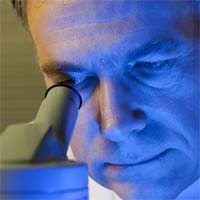New Molecule May Aid Mesothelioma Diagnosis

Scientists at one of the nation’s top cancer centers say they have come up with a new imaging tool that may make it easier to diagnose and monitor mesothelioma.
Mesothelioma, a cancer that attacks the membranes encasing the lungs or abdominal organs, is caused by exposure to airborne asbestos. It is a very challenging cancer to treat and most patients explore conventional therapies, clinical trials and integrative modalities. Mesothelioma symptoms, which can include shortness of breath, fatigue, coughing and chest pain, can mimic other illnesses, including lung cancer. Their sheet-like shape can also make mesothelioma tumors difficult to see on imaging studies. Just as treatment is usually multi-faceted, physicians often must use multiple methods to diagnose mesothelioma.
One of the most popular diagnostic methods is positron emission tomography (PET), a nuclear medicine imaging technique. PET scanning detects gamma rays emitted by a tracer that is delivered into the body via a biologically active molecule, typically FDG, a form of glucose. The effectiveness of the scan depends in part on how much FDG is absorbed by the cancer cells and, hence, can be seen on imaging.
Now mesothelioma researchers at MD Anderson Cancer Center in Texas have developed a new biologically active molecule for cancer imaging called ethylenedicysteine-glucosamine (ECG). ECG concentrates in the nucleus of cancer cells, potentially revealing important information about their function. To test the effectiveness of the new molecule in detecting the metabolic activity of mesothelioma cells, the research team first measured mesothelioma cell uptake of ECG in the lab. They then used the ECG molecule to conduct imaging studies on mesothelioma-bearing rats.
The team reports that mesothelioma tumors could be clearly visualized when imagine studies were conducted using ECG. They also conclude that ECG “showed increased uptake in mesothelioma”, suggesting that it may be even more valuable than FDG in diagnosing mesothelioma and monitoring a tumor’s response to therapy.
Sources:





